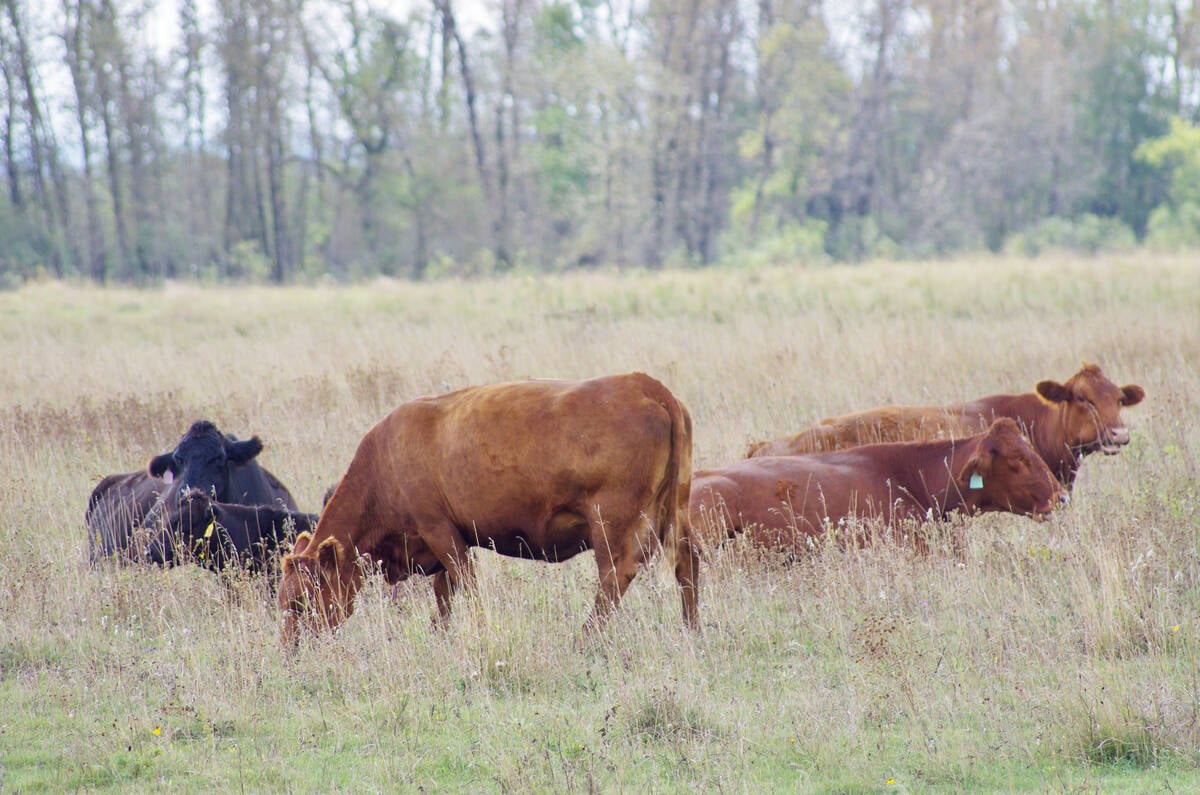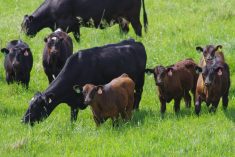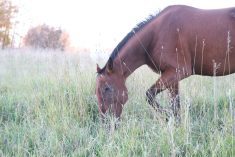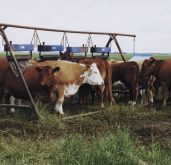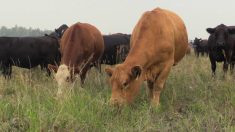Fog fever, the slang name for the cattle disease acute bovine pulmonary emphysema, may have more to do with Canada’s British heritage than symptoms or conditions leading to its onset.
“When I grew up, it was called ‘the grunts.’ And the reason it was called the grunts was very obvious. Because when an animal is affected with this, they grunt and it is loud,” said veterinarian Dr. Van Mitchell, who grew up in Utah.
“You can hear it from one hundred yards away,” said Mitchell, who works for Metzger Veterinary Services in Ontario and Alberta.
Read Also

Mandatory holiday joy a valid struggle
Christmas may not be that jolly for everyone. Farm family coach Kalynn Spain suggests those struggling with over-the-top joy during the holidays instead aim for “fulfilled” or “content.”
WHY IT MATTERS: Fog fever may not be a common issue for Manitoba’s cattle sector, but a fall pasture flush can set the stage for it.
Acute bovine pulmonary emphysema and edema are caused by toxins that damage the cells lining the air sacs in the lungs. This causes fluid to leak into the airways, making it difficult to breathe.
“The funny thing about fog fever is the name of fog fever really has nothing to do with fog, and the animals generally don’t have a fever. It’s a traditional name from England, I think, where the pastures are green and lush after a wet fog. There’s no fog in the desert where I’ve seen it,” Mitchell said.
In Western Canada, the veterinarian sees the issue after cattle come off dry pasture and are put on lush pasture.

In his eastern experience, it’s different. Cattle in Ontario generally don’t spend the summer on dry pastures.
The most common scenario, said Mitchell, is that cattle are moved after grazing dry pasture all summer to a field where they graze the remaining green grass around ditches, fences or irrigated corners of a field. The cattle get sick after a few days on the new pasture.
“They go from extremely dry feed to a wet, more lush-type feed, and the case really kicks off with the change in bacteria in the rumen.
“When they show the classic clinical signs, it is very easy to diagnose when you mention it with the history. Generally, if you have the history this consistent and the clinical signs, it’s pretty straightforward to say, ‘Yeah, this is fog fever.’”
Nutrition issue
The change in diet creates a shift in rumen bacteria. The rumen bacteria form toxins that damage the lungs. There is no known cure for the disease.
Instead, Mitchell said management is key to its prevention. He recommends feeding grass hay before turning the cattle onto the fresh grass so their rumens are full and they don’t gorge on the new grass.

Dr. Steve Hendrick, consulting veterinarian with Telus Agriculture, agrees that prevention and knowledge of what causes the disease are the keys to keeping fog fever away.
“It is simply recognizing that if you’ve utilized really dry pasture and then moving to something that is getting some regrowth, there is a potential risk. What causes it typically is the cow herd is moved from dry pasture to lush pasture, or if you get a dry summer and then get some late-season rains and a flush of green grass. It doesn’t happen every year. It depends on the weather and the location.”
Full cattle for new pasture
Unlike bloat on fresh clover or alfalfa, which can happen overnight, fog fever can take anywhere from four to 10 days to appear, and it generally only happens to a few animals in the herd. Preventing cattle from gorging on green grass is the key to preventing the disease. Ideally, the cattle are turned onto the new grass with bellies full of dry hay, or their time on the new grass is limited to four or five hours for the first few days.
“That allows the rumen to adjust to changes. It’s really management. This is definitely a management disease,” said Mitchell.
“I don’t know of any medications or medicated feed additives or anything that is truly preventative.”
Because a change in rumen bacteria causes the disease, Mitchell recommends possibly adding a protein tub in the pasture before moving the cattle to the new grass to increase the protein and start the change of bacteria in the rumen.
Watch for fall flush
Fog fever is not a common disease and is down the list of regular and routine diseases seen in the fall. Generally, it affects only a couple of animals in the herd and not every season.
“It is not really that common, but when it happens, it’s bad and it’s hard to treat. It affects them severely. I would say most of mine that I see die. That’s probably because I just see them when they’re bad. When the vet gets called, they’re the ones that we see grunting and foaming at the mouth and really heaving, trying to catch some air,” said Mitchell.
Hendrick said there is no one particular part of Western Canada that sees more of the disease than others, but it appears in pockets across the Prairies, depending on the weather and the flush of green grass.
Mitchell said it is a disease few veterinarians or farmers see. A diagnosis may come years later when people are talking about strange deaths. When they describe the grunts from an animal, the mystery is solved.

